AGFC adds veggies to Greers Ferry Lake recipe
ON 07-19-2023
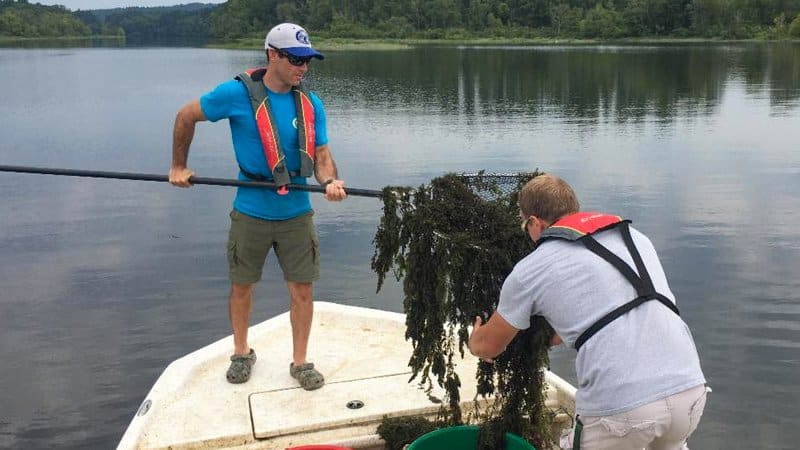
July 19, 2023
Randy Zellers
Assistant Chief of Communications
HEBER SPRINGS — The recipe for healthy aquatic habitat on many Arkansas lakes isn’t quite complete without a fair share of vegetables, but that ingredient has been lacking at Greers Ferry Lake and many other Army Corps of Engineers reservoirs for many years. An intensified effort by Arkansas Game and Fish Commission fisheries biologists may prove to be the secret sauce for an improved fishing experience if a new cooking technique pans out.
According to Tyler Savage, AGFC habitat technician in Mountain Home, aquatic vegetation can benefit a lake in many ways.
“It provides foraging habitat that anglers recognize for sport fish like black bass and walleye, but it has much more value than that,” Savage said. “It’s nursery habitat for juvenile fish; it helps control erosion through bank stabilization, and it traps sediment to improve water quality.”
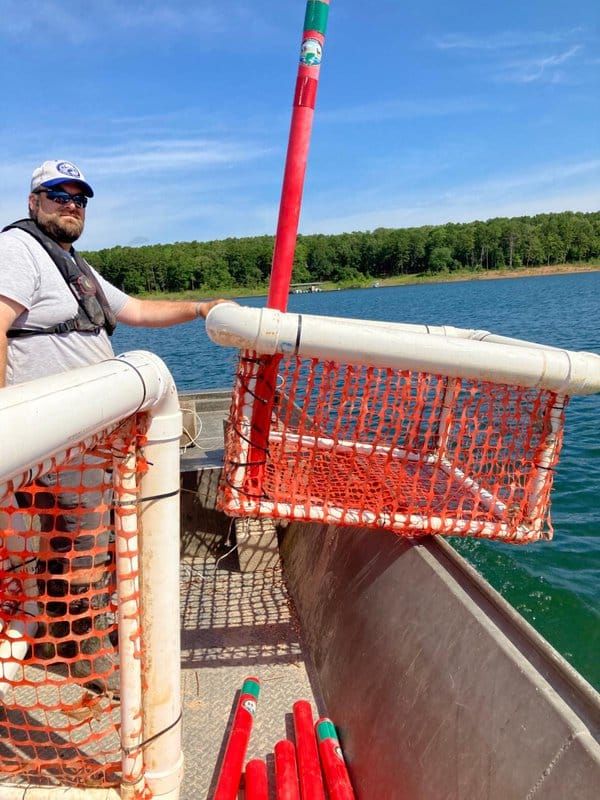
Vegetation is so important to the health of a fishery that it’s a key component of the AGFC’s 2022 Reservoir Black Bass Management Plan.
Many vegetation projects have been tried along the shore at Greers Ferry with mixed results, but a new technique may be a solution to getting some of that natural salad fish and anglers love.
“The AGFC has been able to establish water willow in portions of the lake, but the lake’s highly variable water levels prevent some submerged aquatic vegetation from getting established,” Savage said. “But we’ve been working with a method fellow fisheries biologists in the Hot Springs area have been using. They’ve seen some promising results so far, and we adopted the technique in 2020 on Greers Ferry.”
Biologists are using contraptions dubbed “Arkansas Cubes” that have been used at DeGray Lake during the last few years.
“The cubes are a modification of a concept from the Corps’ Engineering, Research and Development Center in Texas,” Sean Lusk, AGFC staff biologist, said. “We modified a floating container they called a ‘tetra-weed-ron’ (a clever take on a tetrahedron from Geometry class). The cube can fit not only the coontail we’re using, but also potted plants.”
The idea behind the cubes is that they will float partially submerged and contain living masses of coontail, pondweed and other vegetation.
“The coontail can just be loaded into the cube and it will survive,” Lusk said. “Pondweeds, eelgrass and other types of aquatic plants need to be placed in pots within the cube. Both will spread through seed dispersal, but the real benefit is reproduction through fragmentation.”
Lusk said wave action will break apart small pieces of the plants, which can then form new colonies as they disperse.
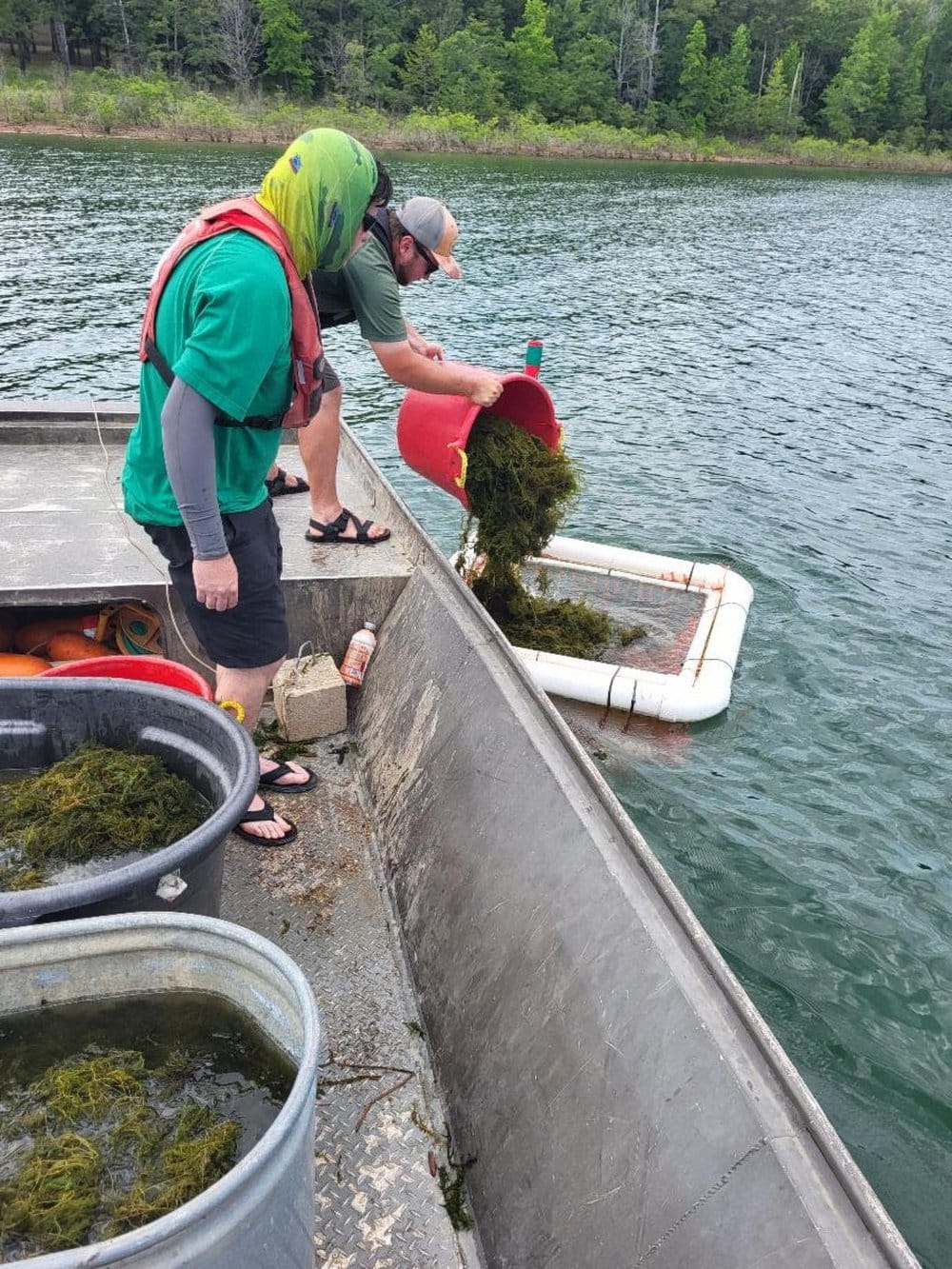
“A major advantage of the cubes is that they adjust to rising and falling water levels,” Lusk said. “And the netting around the cubes prevents predation from turtles and other aquatic herbivores that would otherwise mow down our efforts.”
Savage and other AGFC staff deployed eight Arkansas Cubes filled with coontail across the southern portion of the lake.
“We also looked at locations on DeGray that have shown success, and we picked areas with similar characteristics on Greers Ferry Lake,” Savage said. “Each lake is going to be different, so we monitor the cubes regularly to replenish them with fresh coontail when needed. We’re always learning and trying to improve the fishery for the fish as well as the anglers who enjoy this great resource.”
CUTLINES:
Scooping Vegetation
Coontail is a beneficial native aquatic plant that fish and anglers love.
Empty Cube
Arkansas Cubes protect native vegetation to help it spread to new areas of a lake.
Filling Salad Bowl
AGFC staff monitor and refil the cubes as needed with fresh vegetation.
Recent News
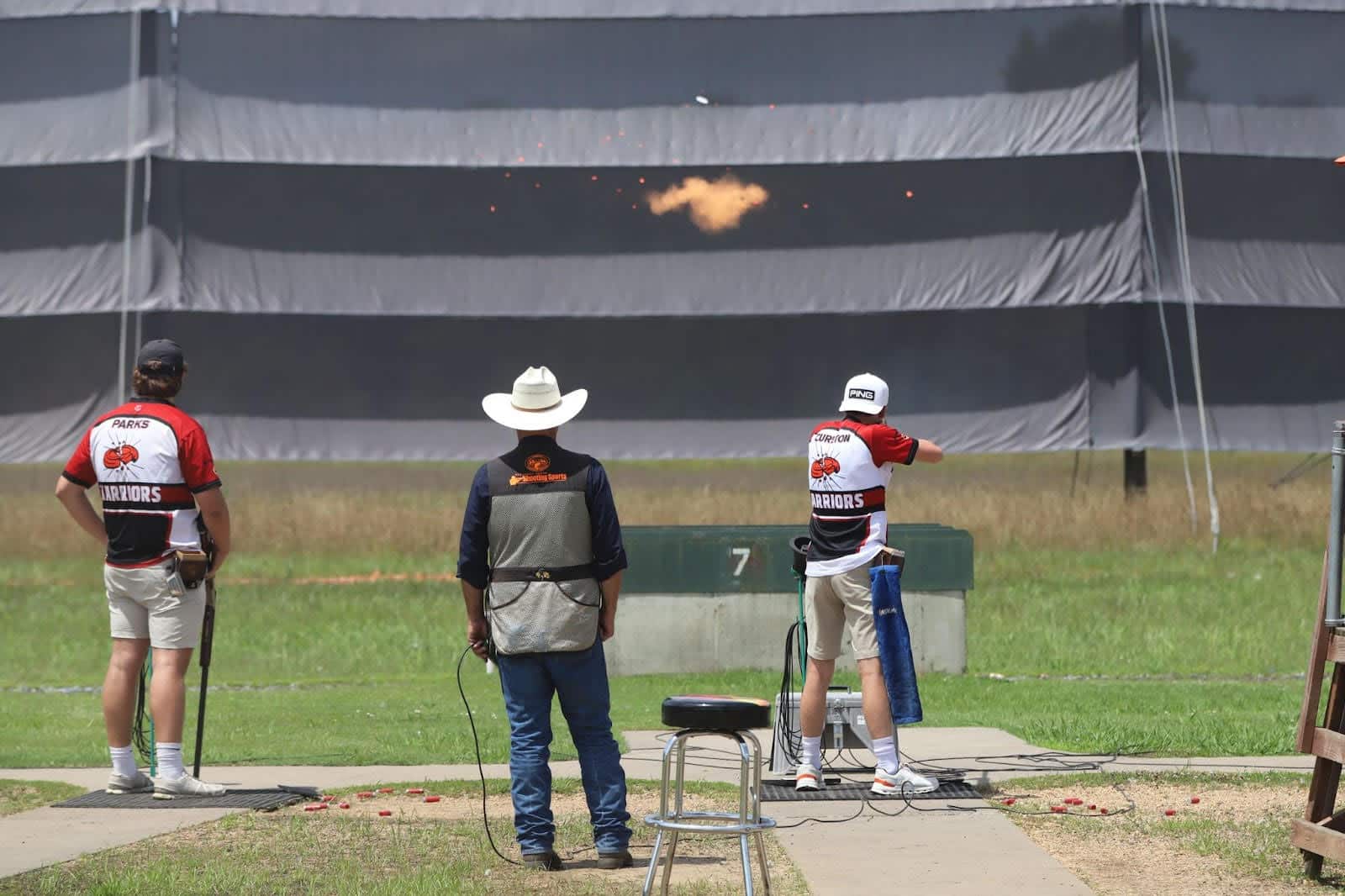
Contenders take aim as shooting sports regionals begin
Apr. 23, 2025
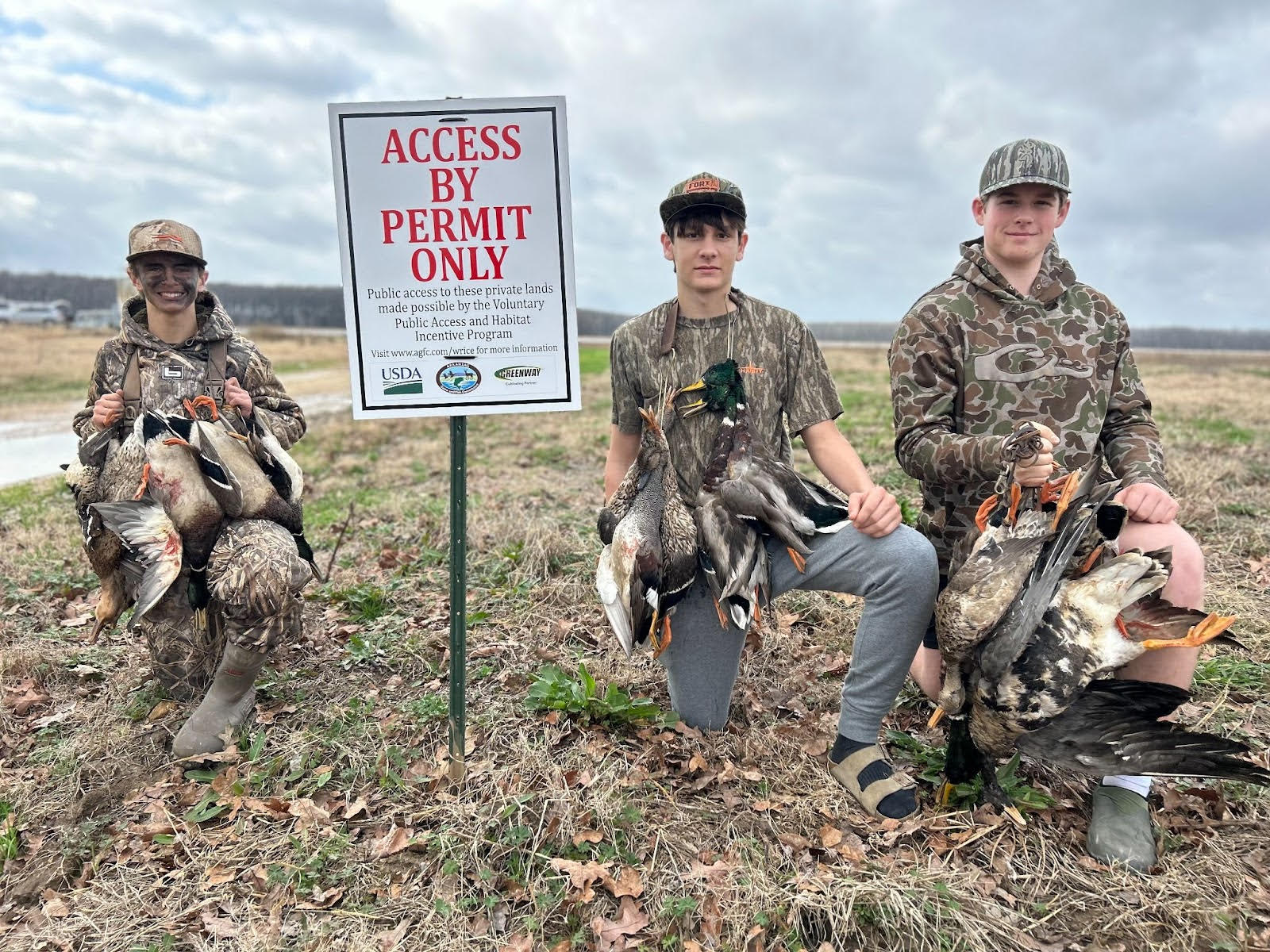
Teens turn duck season around in youth WRICE hunt
Apr. 23, 2025
Subscribe to Our Weekly Newsletter E-mails
Don’t miss another issue. Sign up now to receive the AGFC Wildlife Weekly Newsletter in your mailbox every Wednesday afternoon (Waterfowl Reports are published weekly during waterfowl season and periodically outside the season). Fishing Reports arrive on Thursdays. Fill in the following fields and hit submit. Thanks, and welcome!
